
Córdoba: The Heart of Moorish Spain
Discover Córdoba, a mesmerizing blend of Moorish, Jewish, and Christian heritage, where history, culture, and culinary delights await in the heart of Andalusia.
Córdoba is a city steeped in history and culture, located in the region of Andalusia in southern Spain. Once the capital of the Islamic Emirate and later the Caliphate of Córdoba, this city boasts a rich blend of Moorish, Jewish, and Christian influences. The iconic Mezquita-Catedral, with its stunning arches and intricate mosaics, stands as a testament to the city's diverse heritage. Strolling through the old quarter, visitors will find themselves enchanted by the narrow, winding streets and whitewashed buildings adorned with vibrant flower pots. The Jewish Quarter, or Judería, is particularly captivating, with its charming courtyards and patios, many of which are open to the public during the annual Patio Festival in May. Córdoba is also known for its culinary delights. Tapas bars and traditional Andalusian restaurants offer an array of local dishes, from salmorejo to flamenquín. Don't miss the chance to experience a flamenco show, an art form that thrives in this passionate city. The Guadalquivir River flows through Córdoba, providing a scenic backdrop to the city. The Roman Bridge, which spans the river, is another must-see, especially when illuminated at night. Whether you're exploring ancient ruins, savoring local flavors, or simply soaking in the atmosphere, Córdoba promises an unforgettable experience.
Local tips in Córdoba
- Visit the Mezquita-Catedral early in the morning to avoid crowds.
- Explore the Jewish Quarter on foot to fully appreciate its charm.
- Try local dishes like salmorejo and flamenquín at traditional tapas bars.
- Attend the Patio Festival in May to see beautiful private courtyards.
- Walk across the Roman Bridge at sunset for stunning views.
- Book tickets in advance for popular attractions to save time.
- Take a guided tour to learn more about the city's rich history.
Neighbourhoods in Córdoba
Córdoba: The Heart of Moorish Spain
Córdoba is a city steeped in history and culture, located in the region of Andalusia in southern Spain. Once the capital of the Islamic Emirate and later the Caliphate of Córdoba, this city boasts a rich blend of Moorish, Jewish, and Christian influences. The iconic Mezquita-Catedral, with its stunning arches and intricate mosaics, stands as a testament to the city's diverse heritage. Strolling through the old quarter, visitors will find themselves enchanted by the narrow, winding streets and whitewashed buildings adorned with vibrant flower pots. The Jewish Quarter, or Judería, is particularly captivating, with its charming courtyards and patios, many of which are open to the public during the annual Patio Festival in May. Córdoba is also known for its culinary delights. Tapas bars and traditional Andalusian restaurants offer an array of local dishes, from salmorejo to flamenquín. Don't miss the chance to experience a flamenco show, an art form that thrives in this passionate city. The Guadalquivir River flows through Córdoba, providing a scenic backdrop to the city. The Roman Bridge, which spans the river, is another must-see, especially when illuminated at night. Whether you're exploring ancient ruins, savoring local flavors, or simply soaking in the atmosphere, Córdoba promises an unforgettable experience.
When is the best time to go to Córdoba?
Iconic landmarks you can’t miss
Alcazar of the Christian Monarchs
Discover the historical richness and architectural beauty of the Alcazar of the Christian Monarchs, a captivating fortress in the heart of Córdoba.
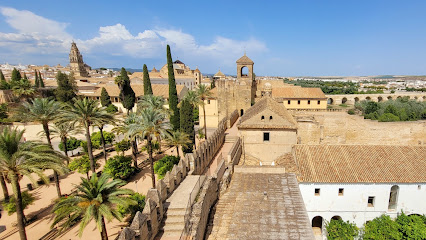
Roman Bridge of Córdoba
Discover the historical beauty of the Roman Bridge of Córdoba, a timeless monument connecting the past and present of this enchanting city.
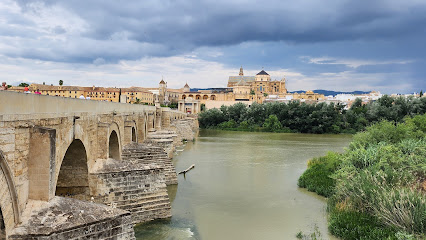
Plaza de la Corredera
Explore the vibrant Plaza de la Corredera, a historical landmark in Córdoba offering rich culture, stunning architecture, and delicious local cuisine.
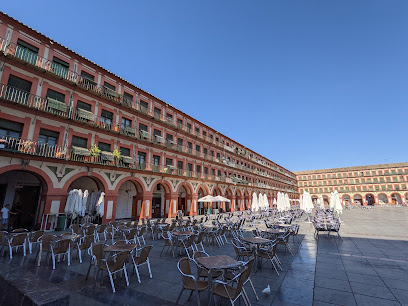
Plaza de las Tendillas
Discover the vibrant charm of Plaza de las Tendillas, a cultural hub in Córdoba featuring stunning architecture, shops, cafes, and lively street performances.

Mosque-Cathedral of Córdoba
Explore the breathtaking Mosque-Cathedral of Córdoba, a UNESCO World Heritage Site showcasing a stunning blend of Islamic and Christian architecture.

Córdoba Archaeological Museum
Explore Córdoba's rich history at the Archaeological Museum, featuring ancient artifacts and engaging exhibits in a beautiful historical setting.
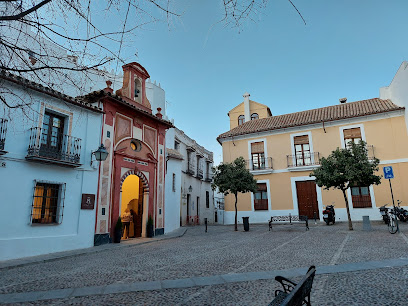
Cristo de los Faroles
Discover the stunning Cristo de los Faroles in Córdoba, a beautiful sculpture and spiritual landmark that enchants every visitor with its serene atmosphere.
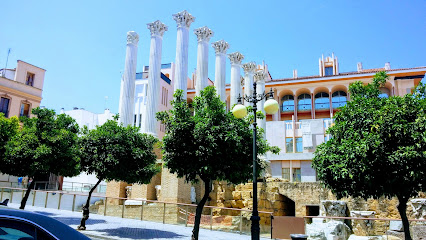
Torre De Calahorra
Discover the rich history of Córdoba at Torre De Calahorra, a captivating museum showcasing the city's Islamic and Christian heritage.
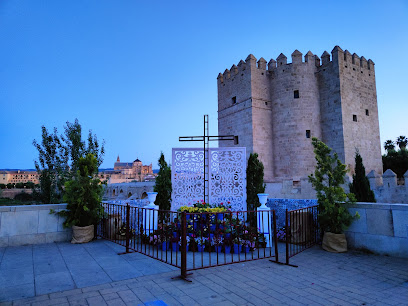
Córdoba Synagogue
Discover the architectural beauty and historical significance of Córdoba Synagogue, a key landmark reflecting the city's rich Jewish heritage.

Patio de los Naranjos
Visit the enchanting Patio de los Naranjos, a serene courtyard filled with fragrant orange trees and rich history in the heart of Córdoba, Spain.
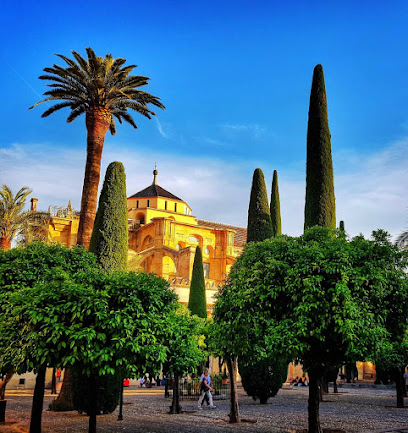
Calleja de las Flores
Discover Calleja de las Flores, Córdoba's enchanting alleyway filled with colorful blooms and rich cultural history, offering stunning views and a tranquil atmosphere.
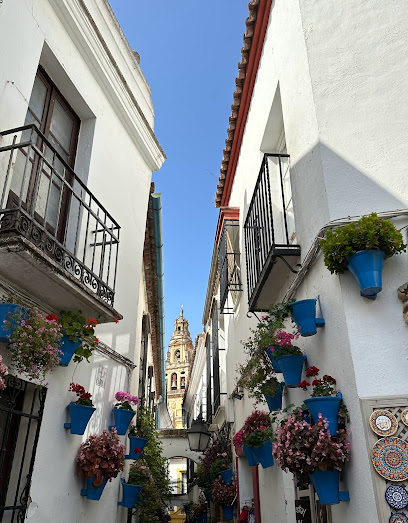
Palacio de la Merced
Experience the architectural grandeur and cultural richness of Córdoba at the stunning Palacio de la Merced, a historic monument not to be missed.
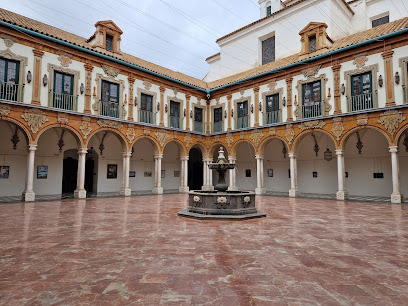
Museum of Fine Arts of Cordoba
Discover the artistic legacy of Spain at the Museum of Fine Arts of Cordoba, showcasing masterpieces from the Middle Ages to contemporary works.
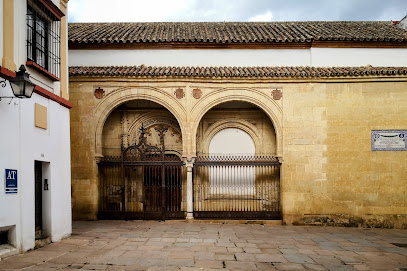
Real Jardín Botánico de Córdoba
Discover the beauty of nature at Real Jardín Botánico de Córdoba, a serene botanical garden showcasing diverse flora in a peaceful setting.
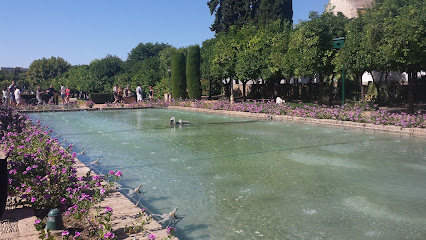
Puerta del Puente
Discover the rich history and stunning architecture of Puerta del Puente, a must-visit landmark in the heart of Córdoba, Spain.
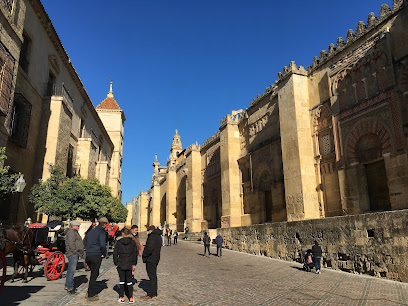
Unmissable attractions to see
Reloj Cucú Villa Carlos Paz
Discover the enchanting Reloj Cucú in Villa Carlos Paz, where artistry meets culture in a captivating clock tower experience.
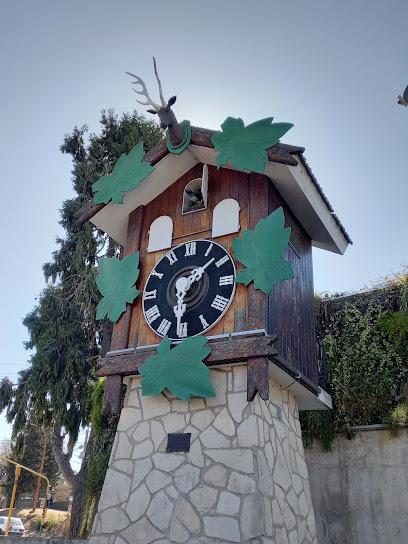
Plaza San Martin
Explore Plaza San Martin, Córdoba's vibrant heart, filled with historical monuments, local arts, and an inviting atmosphere that celebrates Argentine culture.
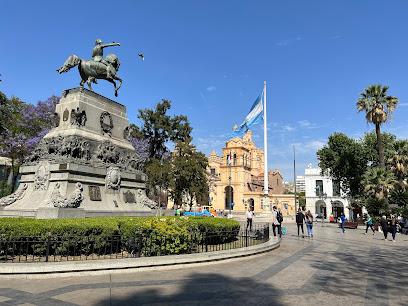
Sarmiento Park
Discover the natural beauty and recreational charm of Sarmiento Park in Córdoba, Argentina – a perfect escape for nature lovers and families alike.

Alcazar of the Christian Monarchs
Discover the Alcazar of the Christian Monarchs in Cordoba, a historical fortress blending breathtaking architecture, serene gardens, and rich cultural heritage.
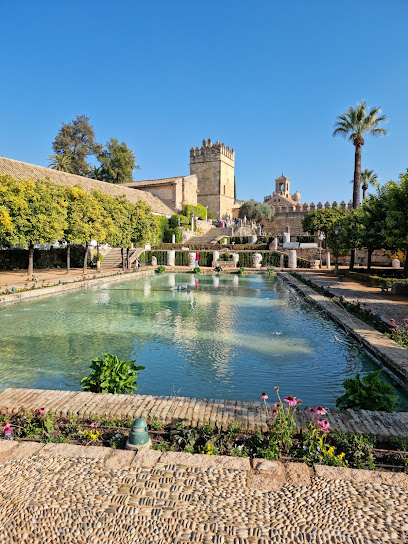
Roman Bridge of Córdoba
Explore the Roman Bridge of Córdoba, a stunning historical landmark that offers breathtaking views and a glimpse into the rich heritage of this enchanting city.
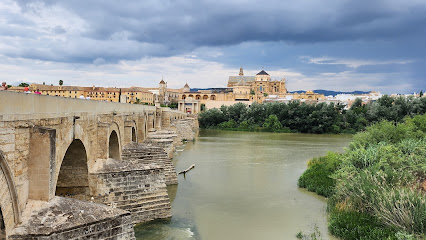
Plaza de la Corredera
Discover the charm of Plaza de la Corredera, a historic square filled with vibrant culture, stunning architecture, and delightful local cuisine in Córdoba, Spain.
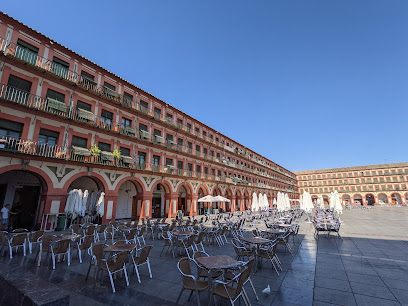
Plaza de las Tendillas
Explore the vibrant Plaza de las Tendillas, Córdoba's iconic square, blending historical charm with modern culture in the heart of Spain.
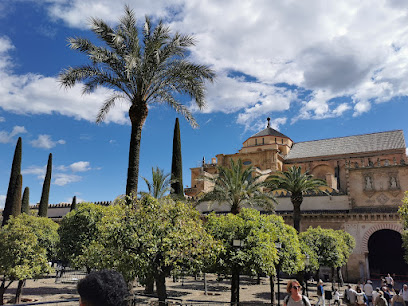
Mosque-Cathedral of Córdoba
Discover the Mosque-Cathedral of Córdoba, a UNESCO World Heritage site that beautifully intertwines Islamic and Christian heritage in a stunning architectural setting.
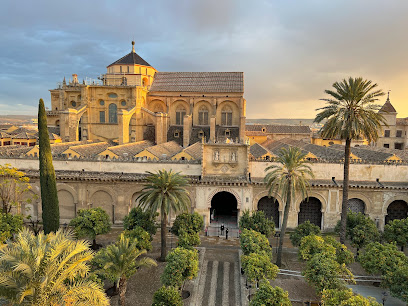
Eden Hotel
Explore the captivating Eden Hotel in La Falda, a historical treasure showcasing stunning architecture and serene gardens amidst the beauty of Córdoba.
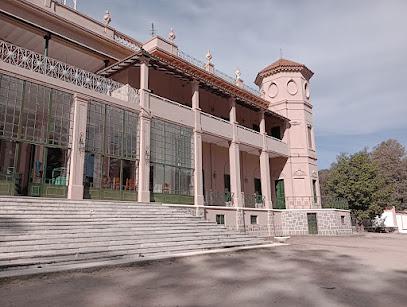
Medina Azahara - Conjunto Arqueológico Madinat al-Zahra
Discover the opulent ruins of Medina Azahara, a UNESCO World Heritage site showcasing the glory of the Umayyad Caliphate near Córdoba, Spain.
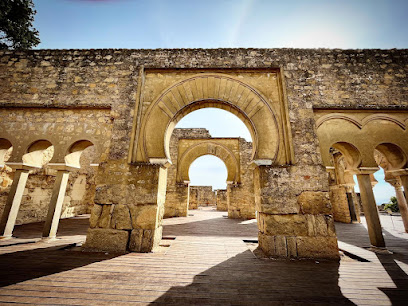
Cine Hoyts Patio Olmos
Experience the magic of cinema at Cine Hoyts Patio Olmos, a stylish cinema in Córdoba, blending history with modern film entertainment.

Palacio de Viana
Explore the historical elegance and stunning gardens of Palacio de Viana in Córdoba, a true Andalusian treasure.

Tajamar
Experience the beauty of nature at Tajamar in Alta Gracia, Córdoba, a perfect destination for relaxation and outdoor activities.
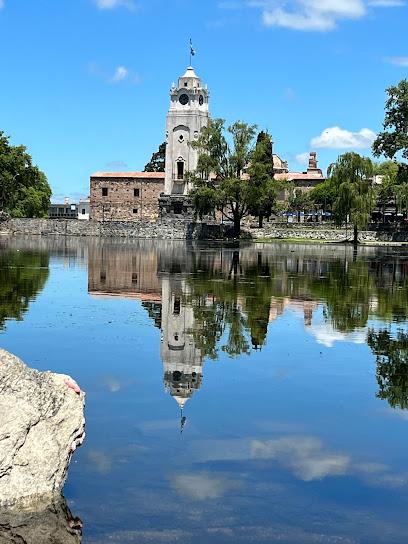
Museo del Che Guevara
Discover the life and legacy of Che Guevara at the Museo del Che Guevara in Alta Gracia, a must-visit destination for history enthusiasts.
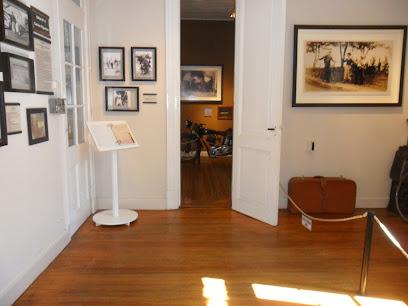
Templo Romano
Explore the Templo Romano, a stunning ancient Roman temple in Córdoba, rich in history and architectural beauty, perfect for every traveler.

Essential places to dine
Bodegas Mezquita (Céspedes)
Discover authentic Andalusian cuisine at Bodegas Mezquita, where exquisite tapas meet warm hospitality in the heart of Córdoba.
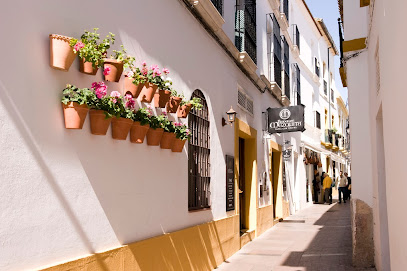
Bodegas Mezquita (Ribera)
Discover authentic Andalusian flavors at Bodegas Mezquita in Córdoba - a delightful bistro known for exquisite tapas and Mediterranean cuisine.
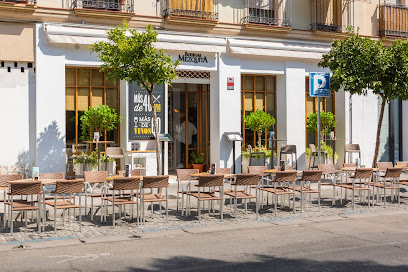
Taberna La Montillana
Savor authentic Andalusian cuisine at Taberna La Montillana in Córdoba, where tradition meets taste in every delightful tapas dish.
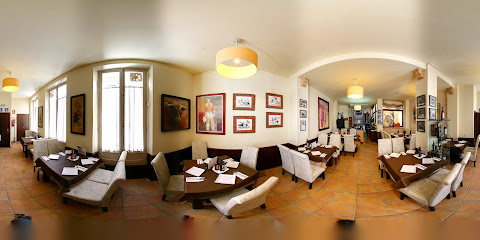
Casa Pepe de La Judería
Experience authentic Andalusian flavors at Casa Pepe de La Judería in Córdoba—where tradition meets culinary excellence.
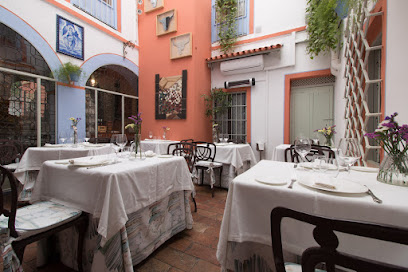
Bodegas Mezquita (Corregidor)
Experience authentic Andalusian cuisine at Bodegas Mezquita, where delightful tapas and fine wines come together in a charming bistro atmosphere.
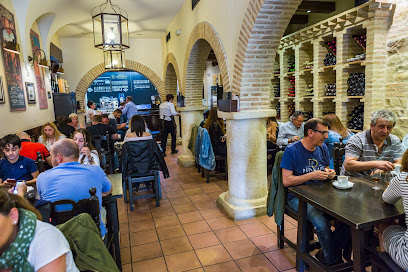
La Taberna del Río
Discover authentic Andalusian flavors at La Taberna del Río - where traditional tapas meet Mediterranean delight in Córdoba.
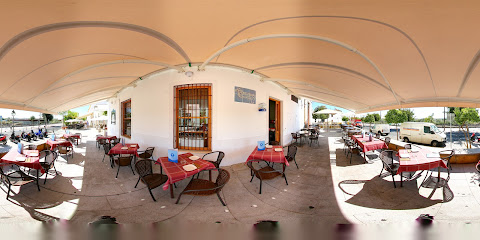
Bodegas Campos
Experience authentic Spanish cuisine at Bodegas Campos in Córdoba – where tradition meets modern elegance.

Restaurante Patio de la Judería
Experience authentic Andalusian flavors at Restaurante Patio de la Judería – where tradition meets taste in the heart of Córdoba.
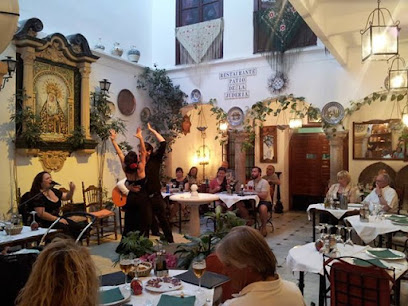
Restaurante El Churrasco | Córdoba
Discover authentic Andalusian cuisine at Restaurante El Churrasco in Córdoba – where tradition meets flavor in every dish.
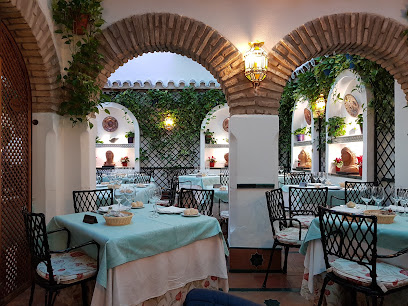
Bodegas Mezquita
Experience authentic Andalusian cuisine at Bodegas Mezquita - where tradition meets flavor in the heart of Córdoba.
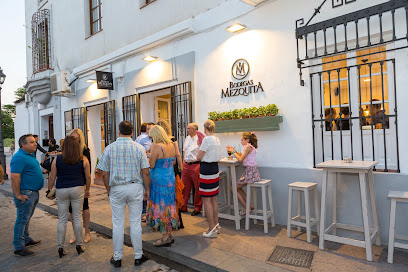
Restaurante Casa Rubio
Discover authentic Spanish cuisine at Restaurante Casa Rubio in Córdoba – where every dish tells a story of tradition and flavor.
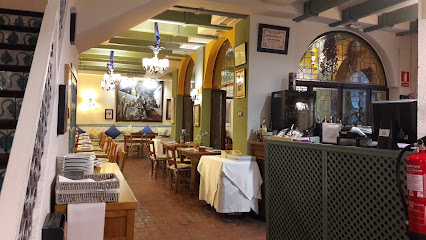
Restaurante The Club
Discover exquisite dining at Restaurante The Club in Córdoba - where tradition meets innovation in every dish.
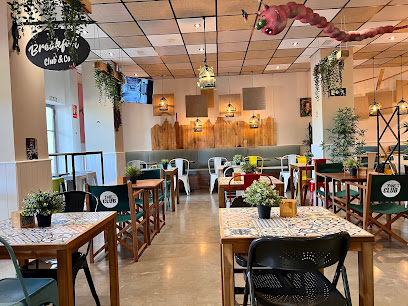
Taberna El Abanico Mezquita - Tapas Córdoba
Experience authentic Spanish tapas in the heart of Córdoba at Taberna El Abanico - where every bite brings tradition and flavor together.
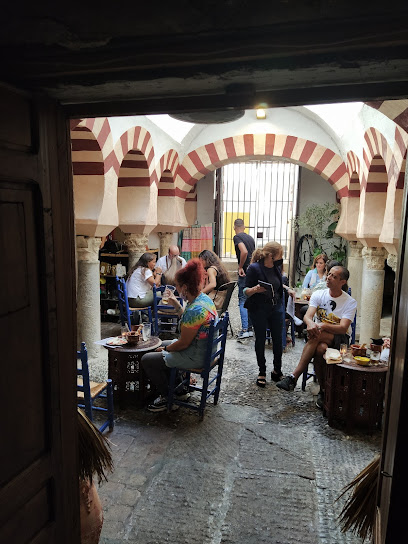
Bar La Bicicleta
Experience authentic Castilian cuisine at Bar La Bicicleta in Córdoba's lively Centro district – where delicious food meets vibrant atmosphere.
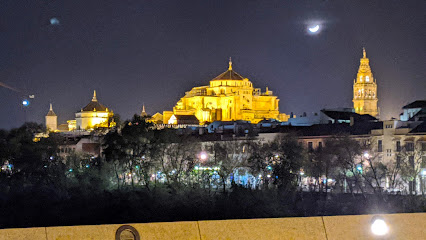
Casa Pedro Ximénez
Experience authentic Andalusian cuisine at Casa Pedro Ximénez in Córdoba, where traditional flavors meet modern dining.
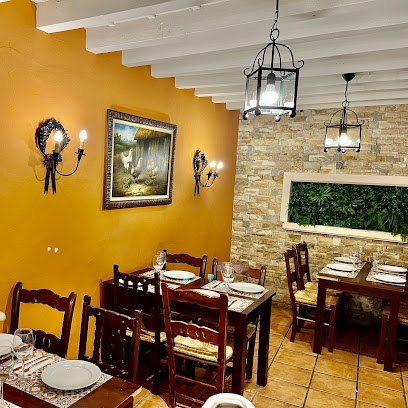
Markets, malls and hidden boutiques
La Sierra Mall
Explore La Sierra Mall in Córdoba: A vibrant shopping haven featuring diverse stores, delightful dining, and an unforgettable retail experience.

ALE-HOP
Explore ALE-HOP in Córdoba for an eclectic mix of fashion accessories, home goods, and youth clothing, perfect for unique souvenirs!
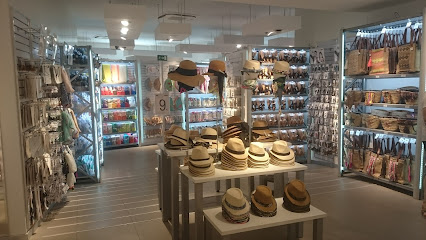
Flying Tiger Copenhagen
Explore the whimsical world of Flying Tiger Copenhagen, your go-to gift shop in Córdoba for unique toys, home goods, and delightful party supplies.
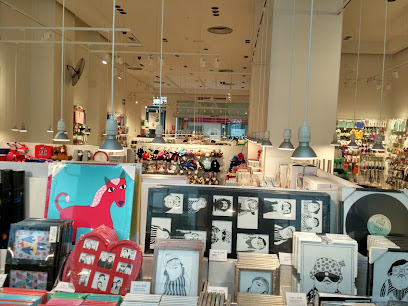
Zoco Municipal de Artesanía
Explore Zoco Municipal de Artesanía in Córdoba for an authentic shopping experience featuring unique handmade crafts and local artisan treasures.
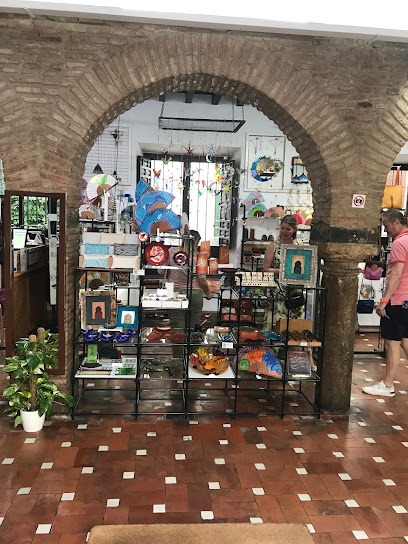
LAS COSAS DE MAMÁ. Ropa ,Complementos y Detalles Invitados en Córdoba
Explore unique women's clothing and accessories at Las Cosas de Mamá, a must-visit fashion destination in Córdoba for every style enthusiast.
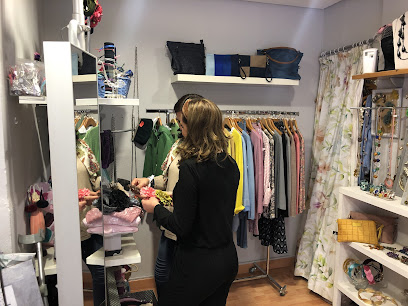
Carmela's closet
Discover unique fashion treasures at Carmela's Closet, a vibrant clothing store in the heart of Córdoba, offering dresses, jewelry, and handbags.
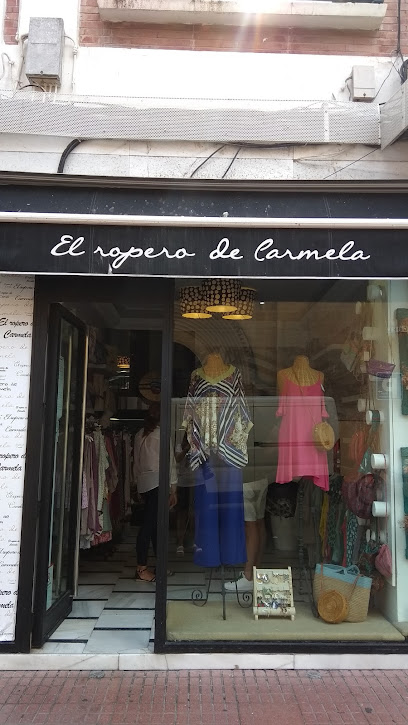
moone - moonë
Explore unique fashion at moone, the charming clothing store in Córdoba offering a blend of modern styles and local craftsmanship.
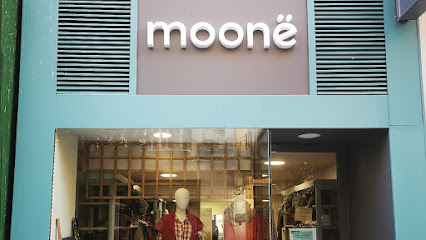
Discos VItalogy
Explore Discos Vitalogy in Córdoba for a rich selection of vinyl records and music memorabilia, celebrating the vibrant local music scene.
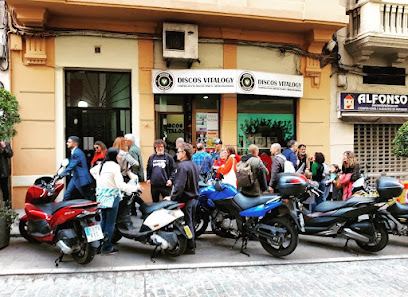
Natura
Discover unique gifts and local crafts at Natura, the heart of Córdoba's shopping experience with stylish clothing and authentic souvenirs.
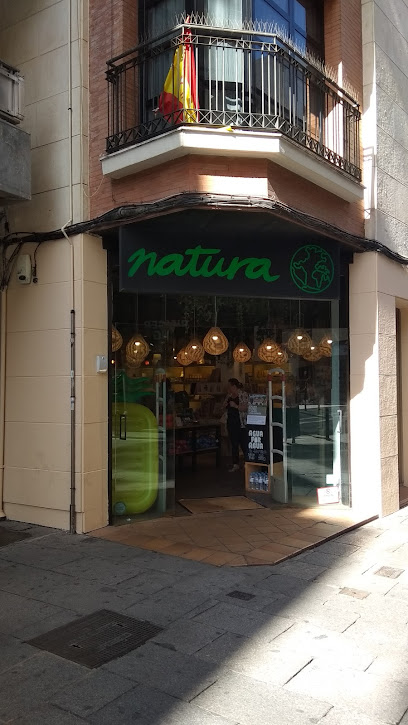
The hippie house
Explore The Hippie House in Córdoba for a unique vintage shopping experience filled with colorful fashion treasures and sustainable finds.
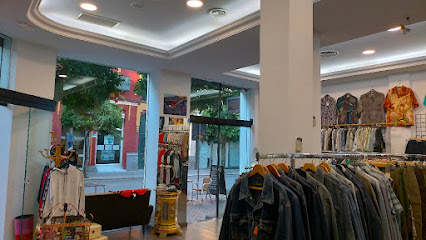
PIPIOLA boutique en Córdoba
Explore PIPIOLA in Córdoba for exquisite women's clothing, trendy accessories, and personalized fashion service in a chic boutique atmosphere.
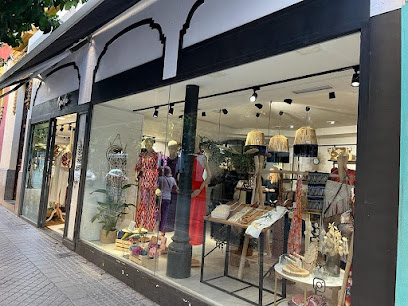
El Espejo Te Dice Guapa
Explore the trendy El Espejo Te Dice Guapa boutique in Córdoba for stylish women's clothing and accessories that cater to every occasion.
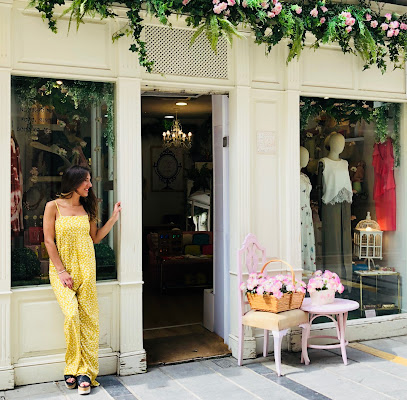
Mairetta Boutique
Explore Mairetta Boutique in Córdoba for unique women's fashion that blends contemporary trends with local craftsmanship.
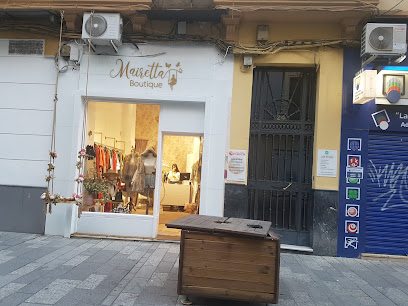
Simplemente Córdoba by Sol Courrege Boné
Explore Simplemente Córdoba for unique souvenirs and handcrafted items that capture the spirit of the city.
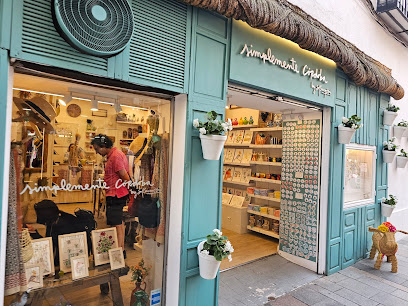
Aristocrazy Córdoba
Explore Aristocrazy Córdoba for exquisite jewelry and accessories in the heart of Andalusia, blending tradition with modern elegance.
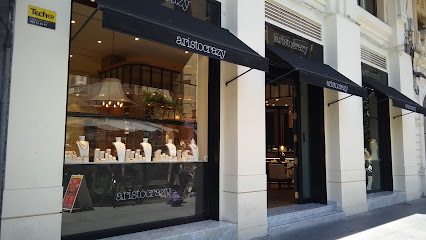
Essential bars & hidden hideouts
Pub Sojo Ribera
Discover Córdoba's lively nightlife at Pub Sojo Ribera, where cocktails, coffee, and great vibes await you in a vibrant atmosphere.
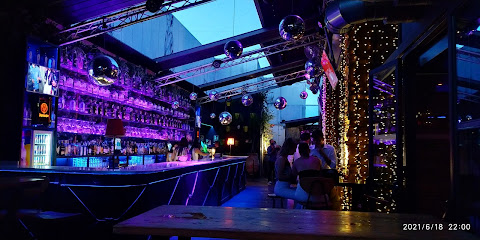
Gran Bar
Experience the vibrant nightlife of Córdoba at Gran Bar, where delightful drinks and a lively atmosphere await you.
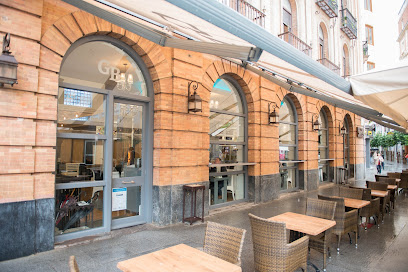
O'Donoghue's Irish Pub
Discover the lively atmosphere, authentic Irish cuisine, and welcoming spirit of O'Donoghue's Irish Pub in the heart of Córdoba, Spain.
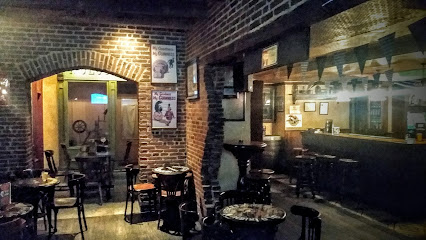
Bar Baron - Córdoba
Experience the heart of Córdoba's nightlife at Bar Baron, where delicious tapas and friendly vibes await every visitor.
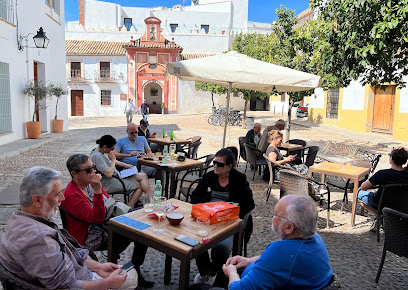
Cafe - Bar La Cavea
Discover the cozy charm of Café - Bar La Cavea in Córdoba, where local flavors and warm hospitality await every visitor.
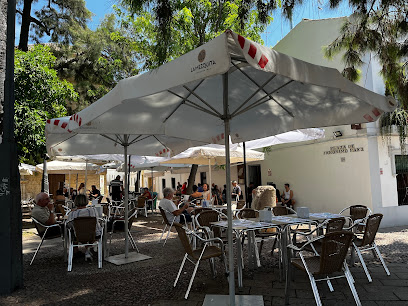
Sojo Mercado
Experience the lively atmosphere and delightful local cuisine at Sojo Mercado, a must-visit pub in the heart of Córdoba.
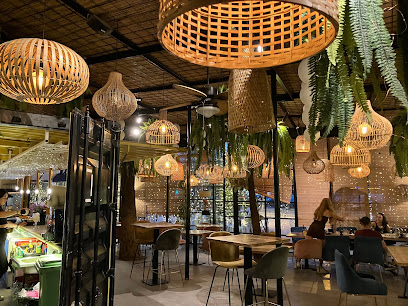
Bar Amapola
Experience the vibrant nightlife of Córdoba at Bar Amapola, where delightful drinks and a lively atmosphere await every visitor.
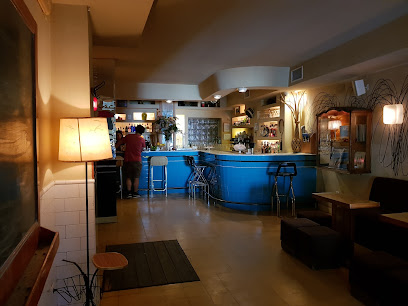
Glace Lounge Bar
Unwind at Glace Lounge Bar in Córdoba, where creativity meets elegance in every cocktail, perfect for an unforgettable night out.

Bourbon Cafe - Córdoba
Experience the lively atmosphere of Bourbon Cafe in Córdoba, where local flavors and vibrant nightlife come together for an unforgettable evening.
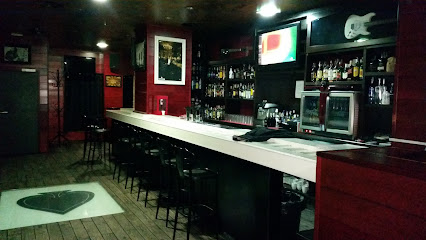
Pub kon-q - Córdoba
Discover the lively ambiance of Pub kon-q in Córdoba, a unique blend of pub and nightclub with delicious food and vibrant nightlife.
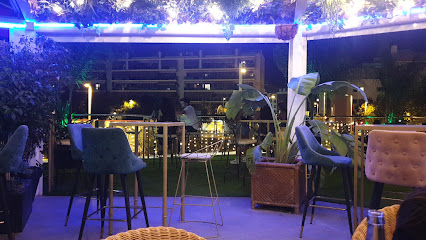
Sojo Confusión
Discover the lively spirit of Córdoba at Sojo Confusión, where nightlife meets local culture in a vibrant pub setting.
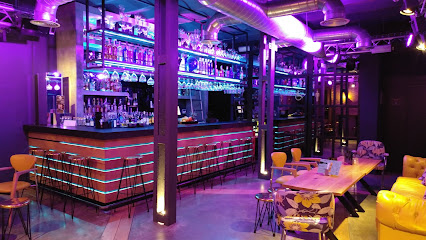
Distrito Cocktail Bar
Experience the vibrant cocktail culture at Distrito Cocktail Bar in Córdoba, where innovative drinks and a lively atmosphere await you.

Bar Los Cuatro Gatos
Discover Bar Los Cuatro Gatos in Córdoba: a charming bar serving authentic tapas and drinks in a vibrant atmosphere.
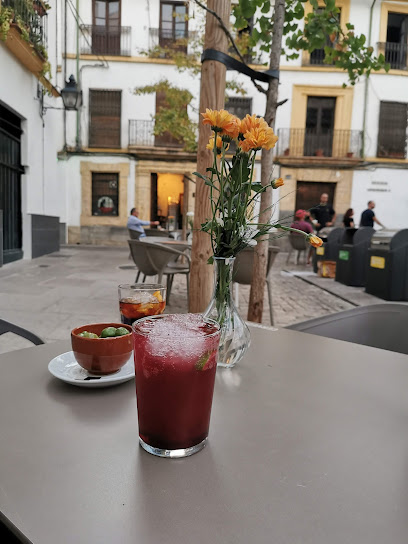
La contentura
Discover La Contentura, a lively tapas bar in Córdoba, where traditional Spanish flavors meet live music for an unforgettable dining experience.
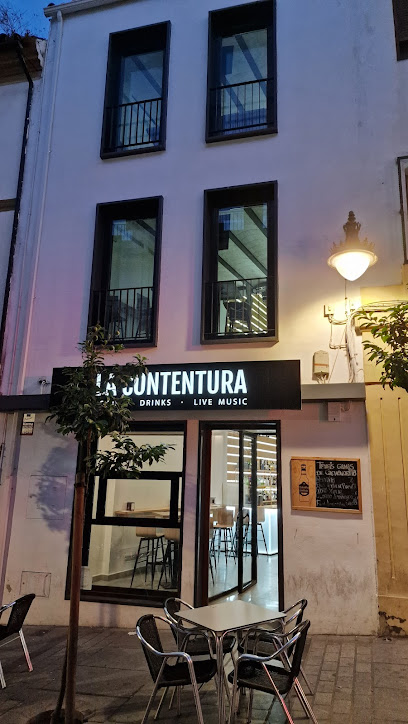
Limbo
Experience the vibrant nightlife of Córdoba at Limbo, where exceptional drinks and a lively atmosphere await every visitor.
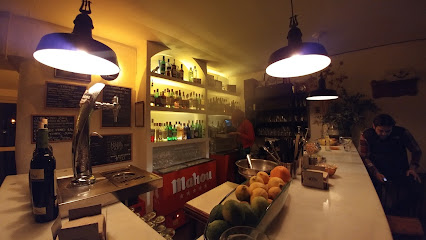
Local Phrases
-
- HelloHola
[oh-lah] - GoodbyeAdiós
[ah-dee-ohs] - YesSí
[see] - NoNo
[noh] - Please/You're welcomePor favor/De nada
[por fah-vor/deh nah-dah] - Thank youGracias
[grah-thyahs] - Excuse me/SorryPerdón/Lo siento
[pehr-dohn/loh syehn-toh] - How are you?¿Cómo estás?
[koh-moh ehs-tahs] - Fine. And you?Bien. ¿Y tú?
[byehn. ee too] - Do you speak English?¿Hablas inglés?
[ah-blahs een-glehs] - I don't understandNo entiendo
[noh ehn-tyen-doh]
- HelloHola
-
- I'd like to see the menu, pleaseMe gustaría ver la carta, por favor
[meh goos-tah-ree-ah behr lah kahr-tah, por fah-vor] - I don't eat meatNo como carne
[noh koh-moh kahr-neh] - Cheers!¡Salud!
[sah-loohd] - I would like to pay, pleaseMe gustaría pagar, por favor
[meh goos-tah-ree-ah pah-gahr, por fah-vor]
- I'd like to see the menu, pleaseMe gustaría ver la carta, por favor
-
- Help!¡Ayuda!
[ah-yoo-dah] - Go away!¡Vete!
[veh-teh] - Call the Police!¡Llama a la policía!
[yah-mah ah lah poh-lee-see-ah] - Call a doctor!¡Llama a un médico!
[yah-mah ah oon meh-dee-koh] - I'm lostEstoy perdido
[ehs-toy pehr-dee-doh] - I'm illEstoy enfermo
[ehs-toy ehn-fehr-moh]
- Help!¡Ayuda!
-
- I'd like to buy...Me gustaría comprar...
[meh goos-tah-ree-ah kohm-prahr] - I'm just lookingSolo estoy mirando
[soh-loh ehs-toy mee-rahn-doh] - How much is it?¿Cuánto cuesta?
[kwan-toh kwehs-tah] - That's too expensiveEs demasiado caro
[ehs deh-mah-syah-doh kah-roh] - Can you lower the price?¿Puedes bajar el precio?
[pweh-des bah-hahr ehl pree-syoh]
- I'd like to buy...Me gustaría comprar...
-
- What time is it?¿Qué hora es?
[keh oh-rah ehs] - It's one o'clockEs la una
[ehs lah oo-nah] - Half past (10)Y media (10)
[ee meh-dee-ah (deh-eez)] - MorningMañana
[mah-nyah-nah] - AfternoonTarde
[tahr-deh] - EveningNoche
[noh-cheh] - YesterdayAyer
[ah-yehr] - TodayHoy
[oy] - TomorrowMañana
[mah-nyah-nah] - 1Uno
[oo-noh] - 2Dos
[dohs] - 3Tres
[trehs] - 4Cuatro
[kwah-troh] - 5Cinco
[theen-koh] - 6Seis
[says] - 7Siete
[syeh-teh] - 8Ocho
[oh-choh] - 9Nueve
[nweh-veh] - 10Diez
[dyehth]
- What time is it?¿Qué hora es?
-
- Where's a/the...?¿Dónde está el/la...?
[dohn-deh ehs-tah ehl/lah] - What's the address?¿Cuál es la dirección?
[kwal ehs lah dee-rehk-syohn] - Can you show me (on the map)?¿Puedes enseñarme (en el mapa)?
[pweh-des ehn-sehn-yar-meh (ehn ehl mah-pah)] - When's the next (bus)?¿Cuándo pasa el próximo (autobús)?
[kwan-doh pah-sah ehl proh-ksee-moh (ow-toh-boos)] - A ticket (to ....)Un billete (a ....)
[oon bee-yeh-teh (ah)]
- Where's a/the...?¿Dónde está el/la...?
History of Córdoba
-
Córdoba, originally named Corduba, was founded by the Romans in 152 BC. It quickly became an important administrative center of the Roman Empire. The city's strategic location on the Guadalquivir River helped it flourish, becoming a hub for trade and culture. Roman remains, such as the Roman Bridge and the Temple of Claudio Marcelo, still stand as testaments to this period.
-
After the fall of the Roman Empire, Córdoba came under Visigothic control in the 6th century. This era saw the city transform into a significant religious center, with the construction of Christian basilicas and the establishment of an episcopal see. The Visigothic influence is less visible today but played a crucial role in the city's early medieval history.
-
In 711 AD, Muslim forces led by Tariq ibn Ziyad conquered Córdoba, marking the beginning of an Islamic era. By 929, Abd al-Rahman III declared Córdoba the capital of the Umayyad Caliphate. This golden age saw the city become a beacon of education, culture, and architecture. The Great Mosque of Córdoba, or Mezquita, was constructed during this time and remains one of the most iconic structures in the world.
-
Córdoba was reconquered by Christian forces in 1236, under King Ferdinand III of Castile. The Reconquista marked a significant turning point, as many Islamic structures were repurposed for Christian use. The Great Mosque was converted into a cathedral, blending Moorish architecture with Gothic, Renaissance, and Baroque elements.
-
During the Renaissance and Baroque periods, Córdoba saw the construction of numerous churches, palaces, and other significant buildings. This era also witnessed the rise of prominent figures such as the philosopher Seneca and the poet Luis de Góngora. The city's architectural landscape expanded with impressive structures like the Palacio de Viana and the Convento de la Merced.
-
The 20th century brought modernization and change to Córdoba. The city played a role in the Spanish Civil War and experienced economic and social transformations in the post-war period. Today, Córdoba is recognized for its historic legacy, with the historic center being declared a UNESCO World Heritage Site in 1984. The annual Festival de los Patios, showcasing the city's beautiful courtyards, is a testament to its enduring cultural heritage.
Córdoba Essentials
-
Córdoba is well-connected and easily accessible from various parts of Spain and Europe. The nearest major airport is Seville Airport (SVQ), approximately 130 kilometers away. From Seville, you can take a high-speed AVE train, which takes around 45 minutes to reach Córdoba. Alternatively, Málaga-Costa del Sol Airport (AGP) is about 160 kilometers away, with train services available to Córdoba. If coming from Madrid, the AVE high-speed train is a convenient option, taking about 1 hour and 40 minutes.
-
Córdoba has an efficient public transportation system, including buses operated by Aucorsa. Taxis are readily available and can be hailed on the street or booked via phone. For a more scenic route, consider renting a bicycle as the city is bike-friendly with numerous dedicated lanes. Walking is also a great option, especially in the historic center where many attractions are located close to each other.
-
The official currency in Spain is the Euro (EUR). Credit and debit cards are widely accepted in hotels, restaurants, and shops. However, it's advisable to carry some cash for smaller establishments and local markets. ATMs are abundant throughout the city, providing easy access to cash withdrawals.
-
Córdoba is generally a safe city for tourists. However, standard precautions should be taken. Avoid poorly lit areas and alleys late at night, particularly in the district of Campo de la Verdad. Be cautious of pickpockets in crowded areas such as Plaza de las Tendillas and around major tourist attractions like the Mezquita-Catedral. Always keep your belongings secure and be aware of your surroundings.
-
In case of emergency, dial 112 for immediate assistance, which connects you to police, fire, and medical services. The local police station (Policía Local) and several hospitals, including Hospital Universitario Reina Sofía, are available for emergencies. It is recommended to have travel insurance that covers medical emergencies. Pharmacies (Farmacias) are available throughout the city for minor health issues and over-the-counter medications.
-
Fashion: Do dress comfortably and modestly, especially when visiting religious sites like the Mezquita. Avoid overly casual attire such as beachwear in city areas. Religion: Do respect local customs. Always dress modestly and be quiet in churches and religious places. Public Transport: Do be polite and offer your seat to elderly passengers. Don’t eat or drink on public transport. Greetings: Do greet people with a handshake and a friendly 'Hola'. Respect the local custom of two kisses on the cheek when meeting someone you know. Eating & Drinking: Do try local delicacies and accept tapas with your drinks. Don’t leave a tip that is too high; a small amount is customary.
-
To experience Córdoba like a local, visit the Mercado Victoria for a variety of local foods and drinks. Explore the neighborhoods of San Basilio and the Jewish Quarter (Judería) for authentic Andalusian architecture and local culture. Attend a flamenco show to immerse yourself in traditional music and dance. For a unique experience, visit during the Fiesta de los Patios in May, when locals open their beautifully decorated courtyards to the public.
Trending Landmark in Córdoba
-
Alcazar of the Christian Monarchs
-
Roman Bridge of Córdoba
-
Plaza de la Corredera
-
Plaza de las Tendillas
-
Mosque-Cathedral of Córdoba
-
Córdoba Archaeological Museum
-
Cristo de los Faroles
-
Torre De Calahorra
-
Córdoba Synagogue
-
Patio de los Naranjos
-
Calleja de las Flores
-
Palacio de la Merced
-
Museum of Fine Arts of Cordoba
-
Real Jardín Botánico de Córdoba
-
Puerta del Puente
Nearby Cities to Córdoba
-
Things To Do in Rosario
-
Things To Do in San Juan
-
Things To Do in Mendoza
-
Things To Do in San Miguel de Tucumán
-
Things To Do in San Rafael
-
Things To Do in Fray Bentos
-
Things To Do in Buenos Aires
-
Things To Do in Santiago
-
Things To Do in Colonia del Sacramento
-
Things To Do in Rancagua
-
Things To Do in La Serena
-
Things To Do in La Plata
-
Things To Do in Coquimbo
-
Things To Do in Viña del Mar
-
Things To Do in Valparaíso


















